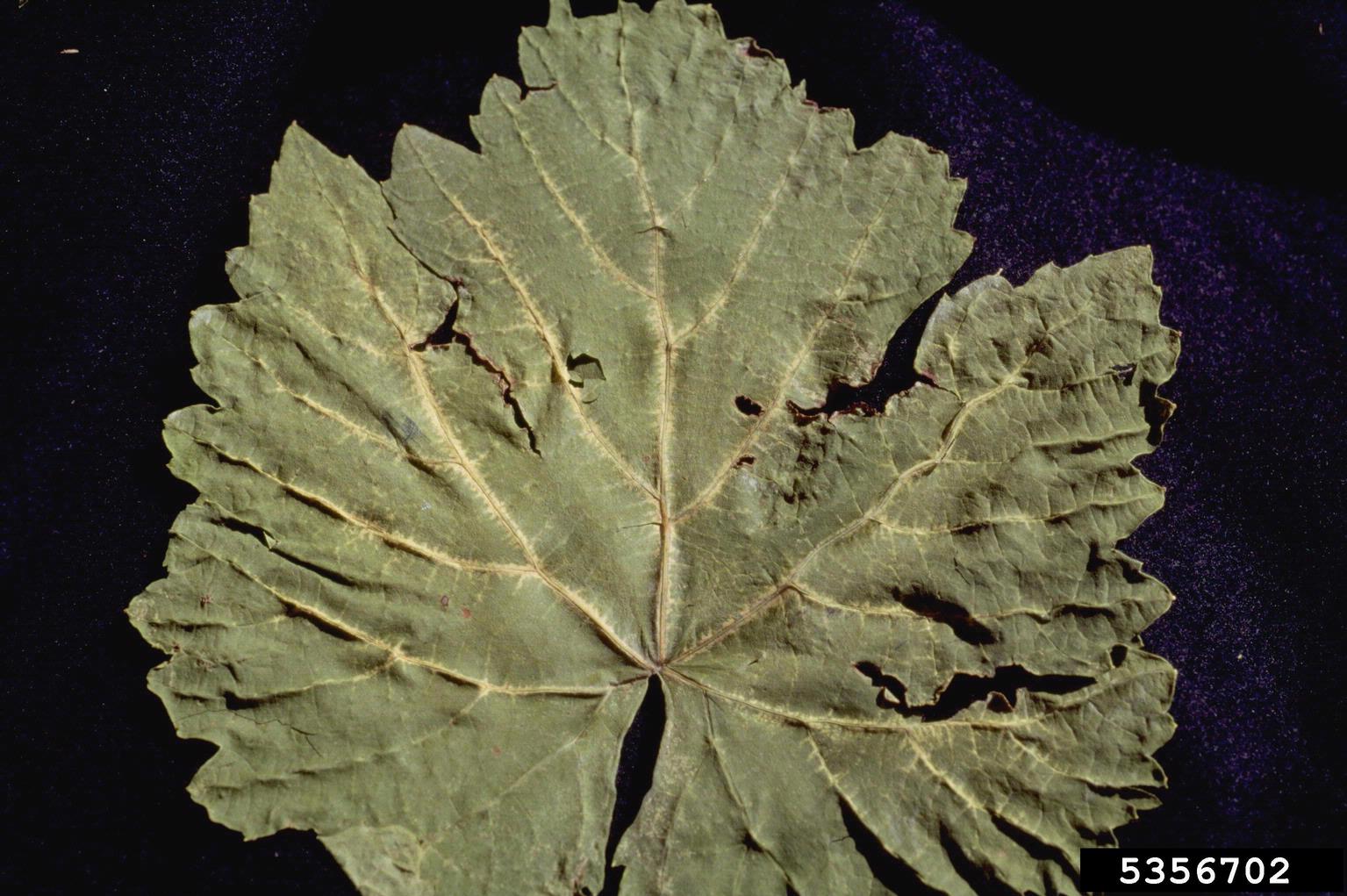Grapevine Fanleaf Degeneration - Controlling Grapevine Fanleaf Virus


Hanging from trellises and arbors, grapes provide beautiful leaf cover and abundant fruit when they're happy and healthy. Unfortunately, grape problems, like grapevine fanleaf virus, aren't uncommon, making growing grapes a significant challenge. If you suspect fanleaf degeneration of grapes in your vineyard or garden, read on for more valuable information.
Grapevine Fanleaf Degeneration
Grapevine fanleaf degeneration is a common grape virus transmitted by dagger nematodes. Not only is it one of the most severe viral diseases of grapes, but the oldest known, with descriptions going back to 1841. Any species of grape can be infected, but Vitis vinifera, Vitis rupestris, and their hybrids are the most susceptible. You should be on the watch for this disease anywhere grapes grow, especially in states with known infections like California, Washington, Maryland, Pennsylvania, New York, and Missouri. Infected plants often show a slow decline and difficulty setting fruit, but nearly always bear a distinctive leaf deformity. Affected leaves exhibit a fanlike shape due to abnormalities in vein formation, and yellow coloration either in a mosaic pattern or in bands along major veins. This yellow coloration generally appears in summer.
Controlling Grapevine Fanleaf Virus
If your grapes are already infected with the grape fanleaf virus, it's too late to do anything about this tragic disease, but you can prevent infection in healthy plants by practicing good tool hygiene between all your plants. In the future, you can avoid this disease by planting certified disease-free grapevines that have nematode resistant rootstocks in new soil far away from the location of your infected grapes. Although widespread establishment of the virus is uncommon in the home garden, the better your sanitation and management, the less likely that grapevine fanleaf virus will become a household problem. Keep weeds tightly controlled around any grape plantings to eliminate vector plants and replant grape areas thickly with nematicidal plants, like French marigolds, to help destroy the nematodes that readily transmit this disease. True resistance to the virus is not yet available in the breeding of grapes, so a combination approach to grape fanleaf virus control is your best bet if you hope to grow grapes successfully in your home garden. Always keep your tools sterilized and plant clean, resistant stock. Also, watch for signs of disease and remove any suspect plants immediately for best results.
Sign up for the Gardening Know How newsletter today and receive a free copy of our e-book "How to Grow Delicious Tomatoes".

Kristi Waterworth was a regular contributor to Gardening Know How for many years, answering countless queries on plant pests and diseases.